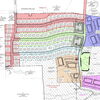Processing Your Payment
Please do not leave this page until complete. This can take a few moments.
New markets drive growth at Kennebec Technologies
Charles “Wick” Johnson examines some stainless steel castings in the production area at Kennebec Technologies, a 30-year-old company that has built its reputation on precision machining. “These have to be accurate to a millionth of an inch,” Johnson says — an indication of just how exacting manufacturing has become in the new century.
Founded as Kennebec Tool & Die in 1982, KT has grown to occupy a 25,000-square-foot building on Church Hill Road in Augusta, just off Route 3. With expected revenues of $10 million this year and a work force of 70, the company is reaping the rewards of $2 million investments in technology and capturing new markets, including medical devices and computer components, that round out the company's customary clients in the aerospace and aircraft industries.
It's a far cry from the early days, when the company “was located in Ed Prendergast's garage” in Windsor, says Johnson. Prendergast was a machinist for GTE Sylvania in Waldoboro when he decided to strike out on his own.
Johnson joined the company in 1984 with the expectation that he would buy it, which he did in 1986, moving to the present site the following year.
Small machine shops had been a mainstay of rural Maine for generations, but by the mid-1990s Johnson found that “it wasn't going to work for us to be a mom-and-pop operation.” A series of five-year plans led to an enormous investment in technology. State-of-the-art cutting and finishing machines from Japan and Germany now dominate the production floor. Robotics are liberally employed, and even some of the tool chests are computerized, providing parts and reordering them when supplies dip.
There's so much technology in use, in fact, that KT has reclassified many of its machinists as “cell managers,” whose responsibilities include coordinating, calibrating and measuring several machines — tasks that used to be done exclusively in the quality control room.
The resulting efficiency in recent years has led to steadily declining prices for the parts and assemblies KT produces, an advantage in the highly competitive world of precision manufacturing. Bart Haley, vice president of sales and marketing, reads from a request from an aerospace company for quotes on a part used in airframe designs. “For the first year, they're looking for a 6% price reduction, and 3% each of the next two years,” he says.
Negotiating such terms has become common in precision manufacturing. Companies must balance complicated supply chains, tight deadlines and quality control for a demanding customer base. At KT, the pressure to become more efficient has sparked continuous production improvements. The vice president of operations, Harvey Smith, “spends a lot of time in his office, thinking up solutions,” Johnson says. A former manager at the Digital Equipment plant in Augusta, Smith examines every process in the KT plant, where even moving machines a few feet closer together can make a difference in the product and its cost.
Perhaps as a result of its commitment to lean manufacturing, KT has experienced “reshoring” of production work that customers moved, or planned to move, to China and India. Smith says a lot of precision manufacturing work that went overseas has returned because of deadlines and quality issues. “On a lot of these jobs, deadlines are extremely tight,” he says. “There's no way you can ship something abroad and get it back in 10 days.”
Johnson says it's common for KT to work on materials with complex supply chains — materials shipped from suppliers in New England to Kansas, where components are in turn shipped to Laredo, Texas, crossing the border to Mexico. From there, they might go to Cleveland before finally reaching the user. The chain may seem dizzyingly complex, but it produces the best quality and price, Johnson says.
High-flying industries
KT put itself on the supply chain map by doing precision work for the space shuttle and advanced Air Force fighter craft like the F-16. Aerospace continues to be a mainstay of the business and is the least cyclical of the industries KT serves. That's because, “the backlogs are so long, 10 to 15 years in some cases,” Haley says.
The company continues to supply parts for the Boeing 737, which entered service in 1967, and the 787 Dreamliner, now being added to commercial routes. “Our parts are probably in every Boeing aircraft that's still in the air,” says Johnson. Wing struts for the 737 are among the components that went to China and now are coming back to KT.
KT is exploring new markets, including medical equipment manufacturing — the millionth-of-an-inch tubes were destined for such use — with promising returns, Johnson says. Parts for semiconductor manufacturing and high vacuum assemblies for computers have also been strong performers.
On the other hand, the alternative energy business has been bumpy. “We were a supplier for Solyndra” — the solar panel maker that went belly-up — “and we had $1 million in the supply chain,” Haley says. “Fortunately, we got paid,” but the next contractor up the line was not so fortunate.
The current plan calls for KT to log $15 million in sales by 2017, which Johnson says is not only attainable but necessary to maintain the company's position in the marketplace. “We have enough work for the next five or six years, but we have to keep looking.” Johnson says. “In our business, it's all about growth.”
It will be a challenge; good customers aren't easy to find. “We figure that to work for us, we have to sell $500,000 in the first year, and have the potential for $1 million after that,” says Haley. At the moment, winning contracts is “all about price” even though “that's not the way we like to work,” he says. If there's too exclusive a focus on price, “that's an indication this contract may be coming to an end.”
A new focus
The company's recent growth follows its rebranding in 2010, including the name change, a complete administrative makeover and production expansions. Ironically, it was a year in which the company had prepared for the worst.
“We were gearing up for a depression, but we actually did better than we expected,” Johnson says, noting the company remained profitable through the recession. A round of layoffs proved temporary, and the work force is back to full strength.
The past three years have been marked “by growing into the name we created,” Johnson says. Though its core business hasn't changed greatly, he sees KT as a technology company. “The iPhone is seen as high tech, but it's really applied technology,” he says. “That's us — finding a better and smarter way to do what we do.”
Key to that change has been the training and development of the work force. Of KT's 70 employees, most are highly skilled and earn wages from $15 to $24 an hour. Employees with a decade of service or more receive a benefit package equal to 25% of their salary, Johnson says.
“It's always been a priority for our employees to be able to live, modestly, on a single paycheck in a family,” Johnson says.
A bonus program has proven successful in encouraging innovation among employees. Steve Lee, vice president of finance, says, “It's not necessarily a lot of money, but it shows how we're doing, and it encourages collaboration on the shop floor. It helps you keep in touch with your neighbor, and how you can both improve.”
KT has long collaborated with the Capital Area Technical Center in Augusta and has good relations with the state's community colleges, Johnson says. But lately, he's had to look farther afield for new employees. In the KT lobby, Smith and Johnson look over an elaborate poster designed for high schools and colleges around the state. Like many employers with high-skill jobs, KT hasn't been able to meet all of its work force needs, despite the current dearth of jobs. He currently wants to hire about a half-dozen machinists to keep pace with existing orders. “We're running 24 hours a day,” Johnson says. “A lot of these machines never stop.”













Comments